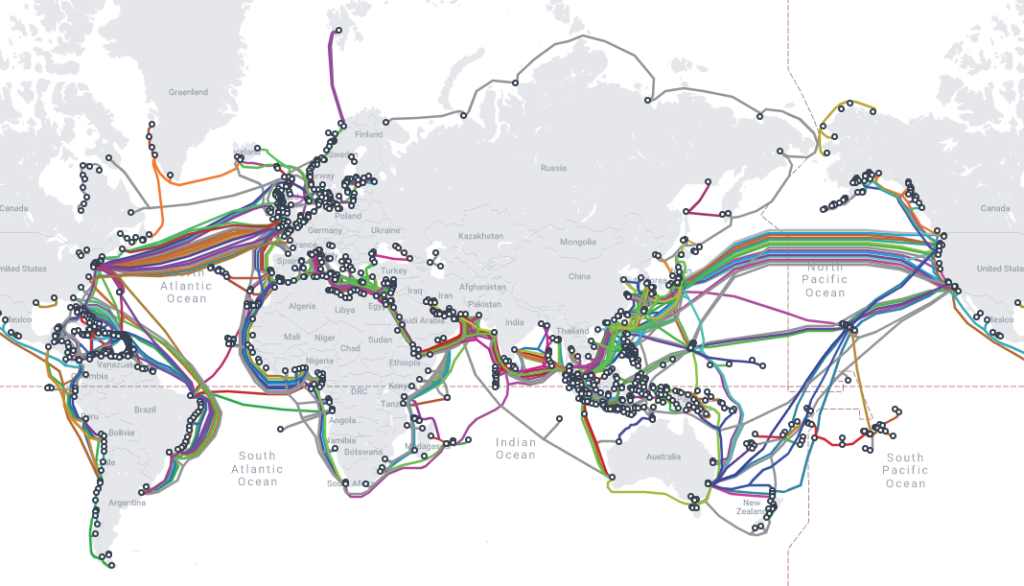An Internet exchange point (IXP) is a physical location through which Internet infrastructure companies such as Internet Service Providers (ISPs) and CDNs use to connect.
An Internet exchange point (IXP) is a physical location through which Internet infrastructure companies such as Internet Service Providers (ISPs) and CDNs connect. These locations exist on the “edge” of different networks and allow network providers to share transit outside their network. By having a presence inside an IXP location, companies can shorten their path to the transit from other participating networks, thereby reducing latency, improving round-trip time, and potentially reducing costs.

How does an Internet exchange point work?
At its core, an IXP is essentially one or more physical locations containing network switches that route traffic between the different members of networks. These networks share the costs of maintaining the physical infrastructure and associated services via various methods. Similar to how costs are accrued when shipping cargo through third-party locations, such as via the Panama Canal when traffic is transferred across different networks, sometimes those networks charge money for the delivery. To avoid these costs and other drawbacks associated with sending their traffic across a third-party network, member companies connect via IXP to cut costs and reduce latency.
IXPs are large Layer 2 LANs (of the OSI network model) built with one or many Ethernet switches interconnected across one or more physical buildings. An IXP is no different in basic concept to a home network, with the only real difference being scale. IXPs can range from 100s Megabits/second to many Terabits/second of exchanged traffic. Independent of size, their primary goal is ensuring that many networks’ routers are connected cleanly and efficiently. In comparison, at home, someone typically only has one router and many computers or mobile devices.
Over the last twenty years, there has been a significant expansion in network interconnections, running parallel to the enormous expansion of the global Internet. This expansion includes new data center facilities being developed to house network equipment. Some of those data centers have attracted massive numbers of networks, in no small part due to the thriving Internet exchange points that operate within them.
Why are Internet exchange points essential?
Without IXPs, traffic going from one network to another could rely on an intermediary network to carry the traffic from source to destination. These are called transit providers. In some situations, there’s no problem with doing this: it’s how a large portion of international Internet traffic flows, as it’s cost prohibitive to maintain direct connections to each-and-every ISP in the world. However, relying on a backbone ISP to carry local traffic can be adverse to performance, sometimes due to the backbone carrier sending data to another network in a completely different city. This situation can lead to what’s known as the trombone, where in the worst case, traffic from one city destined for another ISP in the same city can travel vast distances to be exchanged and then return. A CDN with an IXP presence can optimize the path through which data flows within its network, cutting down on inefficient paths.

BGP, the Internet’s backbone protocol
Networks talk with each other using the BGP (Border Gateway Protocol). This protocol lets networks delineate their internal requirements and network-edge configurations cleanly. All peering at IXPs uses BGP.
How do providers share traffic across different networks?
Transit
The agreement between a customer and its upstream provider. A transit provider provides its customers full connectivity to the rest of the Internet. Transit is a paid-for service. BGP protocol allows customer IP addresses to be announced to the transit provider and then to the rest of the global Internet.
Peering
The arrangement behind how networks share IP addresses without an intermediary between them. There is predominantly no cost associated with transferring data between member networks at Internet exchange points. When traffic is transferred for free from one network to the next, the relationship is called settlement-free peering.
Peering vs. paid transit
Unfortunately, for some networks, transferring data is not always without cost. For example, large networks with relatively equal market share are more likely to peer with other large networks but may charge smaller networks for the peering service. In a single IXP, a member company may have different arrangements with several members. In instances like this, a company may configure its routing protocols to optimize for reduced costs or latency using the BGP protocol.
Depeering
Over time relationships can change, and sometimes networks no longer want to share free interconnection. When a network decides to end its peering arrangement, they go through a process called “Depeering.” Depeering can occur for various reasons, such as when one party benefits more than the other due to bad traffic ratios or when a network starts charging the other party money. This process can be highly emotional, and a spurned network may intentionally disrupt the traffic of the other party once the peering relationship has been terminated.
How do IXPs use BGP?
Using the BGP protocol, different providers can create one-to-one connections across an IXP’s local network. This protocol was created to allow disparate networks to announce their IP addresses to each other and the IP addresses they have provided connectivity to downstream (i.e., their customers). Once two networks set up a BGP session, their respective routes are exchanged, and traffic can flow directly between them.
IXP or PNI interconnection
Two networks may consider their traffic significant enough to move from the shared infrastructure of an IXP and onto a dedicated interconnection between the two networks. A PNI (Private Network Interconnect) is a dark fiber connection (generally within a single data center or building) that directly connects a port on network A with a port on network B. The BGP is nearly identical to a shared IXP peering setup.












